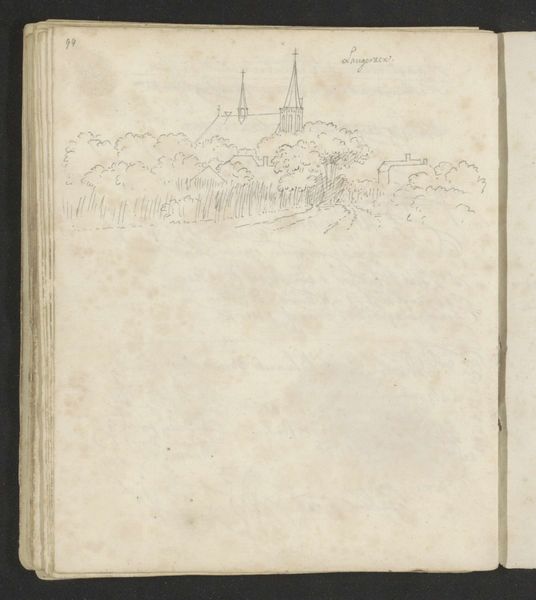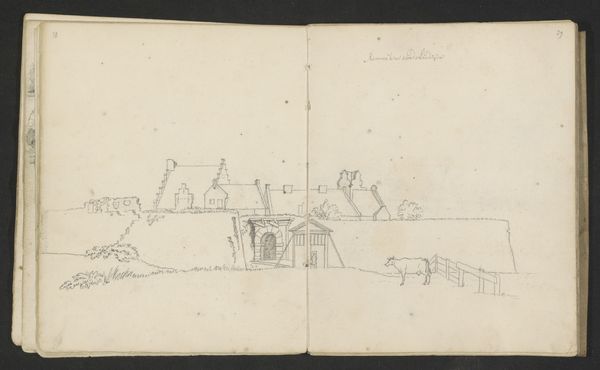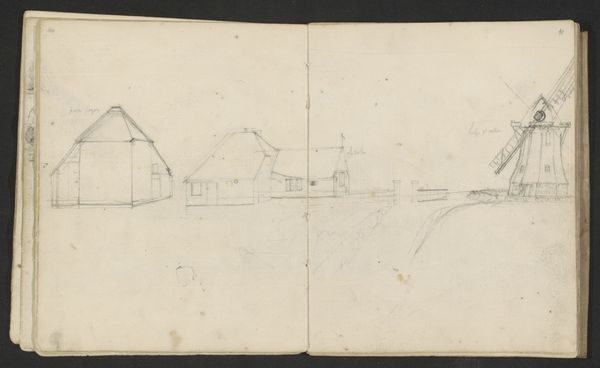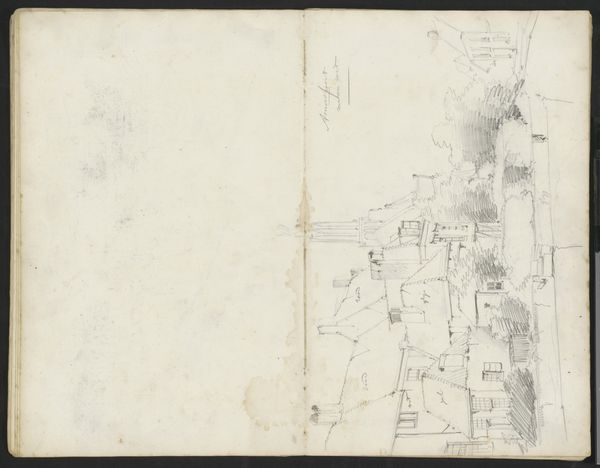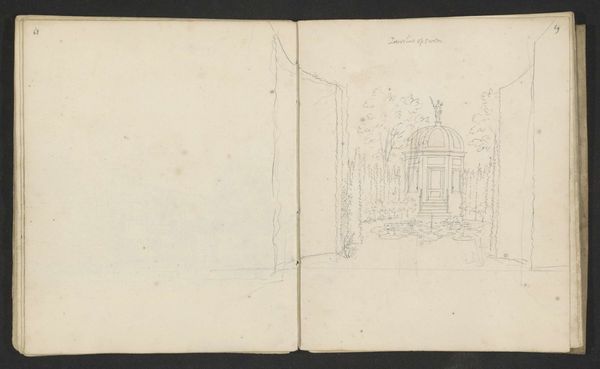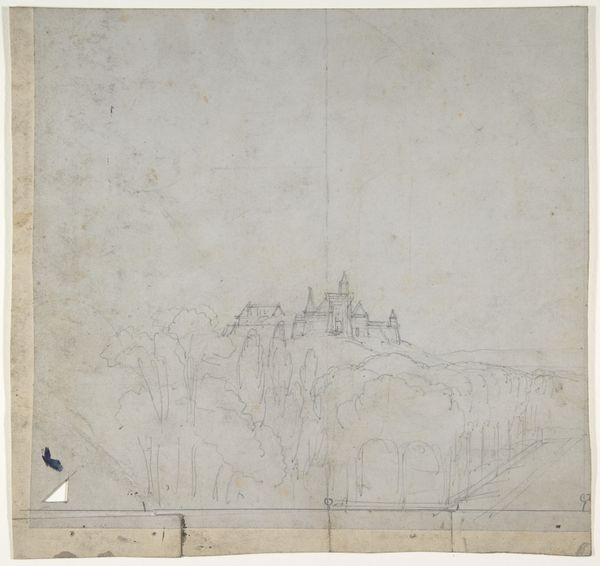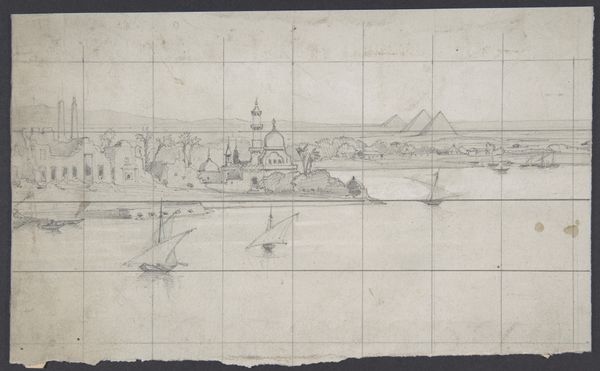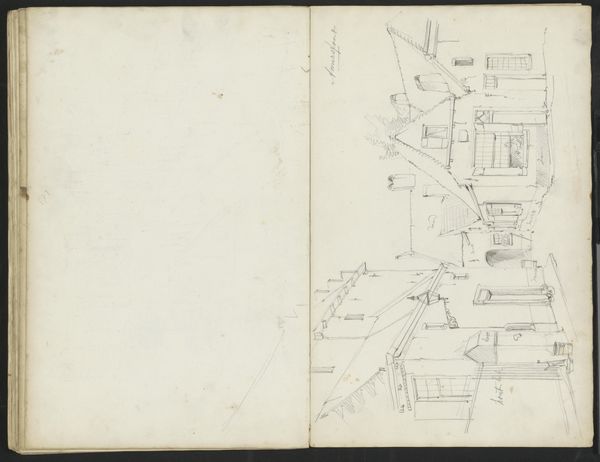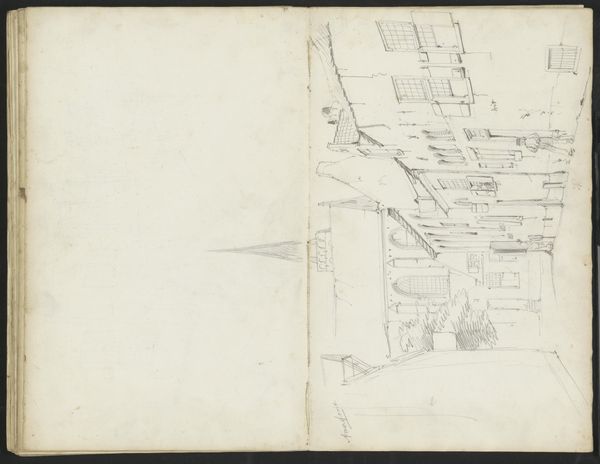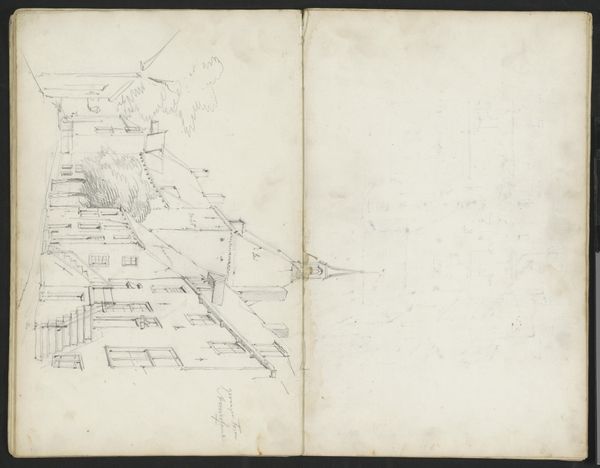
drawing, paper, pencil
#
drawing
#
aged paper
#
homemade paper
#
dutch-golden-age
#
sketch book
#
hand drawn type
#
landscape
#
paper
#
personal sketchbook
#
hand-drawn typeface
#
pen-ink sketch
#
pencil
#
pen work
#
sketchbook drawing
#
cityscape
#
sketchbook art
#
realism
Copyright: Rijks Museum: Open Domain
Editor: This is "Gezichten op Willemstad en Ooltgensplaat" a drawing by Cornelis Pronk, dating back to somewhere between 1728 and 1732. It feels so intimate, like peeking into the artist's personal sketchbook, with these quick studies of townscapes. How would you interpret this work within its historical context? Curator: It's fascinating, isn't it? Consider the role of topography in the 18th century. Pronk wasn't just capturing landscapes; he was documenting them for official purposes. The Dutch Republic was a mercantile power, reliant on trade and navigation. These drawings likely served as records, perhaps even reconnaissance, charting coastlines and settlements. Think of the drawing not just as art, but as information. Editor: That's so interesting. So it's not only aesthetic, but practical? How did institutions support artists making that kind of work? Curator: Exactly! Think about the Dutch East India Company, for instance. They employed artists to create visual records of their territories. While Pronk might not have been directly commissioned by the VOC in this instance, the impulse to document and catalogue the world was certainly present and encouraged through commissions and purchases for city halls. The act of depicting became intertwined with the act of controlling. Does viewing it through that lens change how you perceive the sketchbook nature of it? Editor: It does. I still love seeing the sketchbook format, but knowing that even informal sketches could contribute to a larger societal agenda adds a new weight to them. I appreciate how institutions and historical priorities were so deeply entwined with artistic practice, beyond pure patronage. Curator: Precisely. The sketchbook, the artistic practice and record-keeping for societal administration… all speak to the complex interaction between art, power, and knowledge during the Dutch Golden Age. We've seen how an artwork reflects the societal forces that helped bring it into existence.
Comments
No comments
Be the first to comment and join the conversation on the ultimate creative platform.
